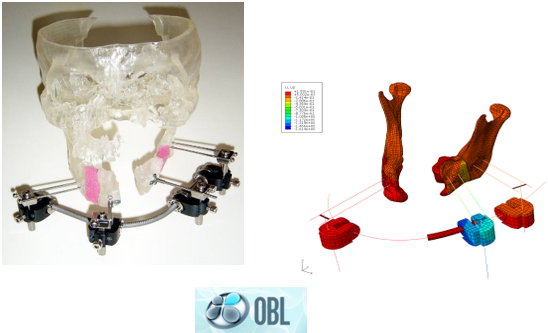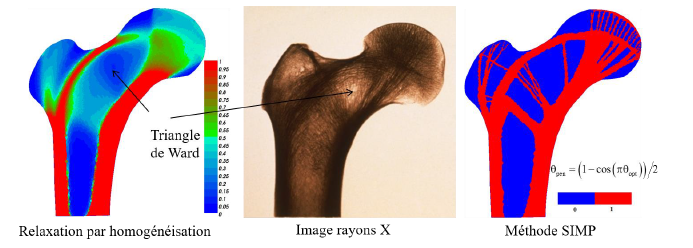Module code UE 963: Patient-specific FE modeling (60h = 22h lectures + 10 tutorials + 28h lab) – 6 ECTS
Module coordinator: Pr. Anne-Sophie Bonnet (anne-sophie.bonnet@univ-lorraine.fr)
Description:
The aim of this module is to give the students the theoretical and practical tools to build a patient-specific finite element model. The module is divided into two parts. The first one will provide the theoretical bases of the Finite Element Method. The second one will describe all necessary stages to elaborate the patient-specific FE model from the medical imaging data. A great attention will also be given to the analysis of the results provided by the numerical simulations.


Pre-requisites:
Fundamentals of tensor analysis – Bases of Continuum Mechanics – Constitutive laws in elasticity – Mechanics of plastic strain, plasticity criteria – Medical Imaging techniques – Classical methods for the post-treatment of medical images
Skills and learning outcomes:
|
Skills |
Level |
Learning outcomes |
|
Skill 9 To analyse the functioning of living organisms and/or human body through a scientific approach: – taking into account the experience of clinicians – using scientific and technical knowledge |
3 |
|
|
Skill 10 To propose an anatomic and functional restauration solution adapted to a clinical issue – taking into account the specificities of a given patient – proposing design solutions adapted to manufacturing processes and techniques in biomedicine – identifying the risks related to the implementation in real conditions – taking into account regulatory aspects |
3 |
|
|
Skill 5 To know how to communicate in both written and spoken French and English and become a team manager (to plan, organize, create and conduct meetings in an efficient way) |
3 |
|
